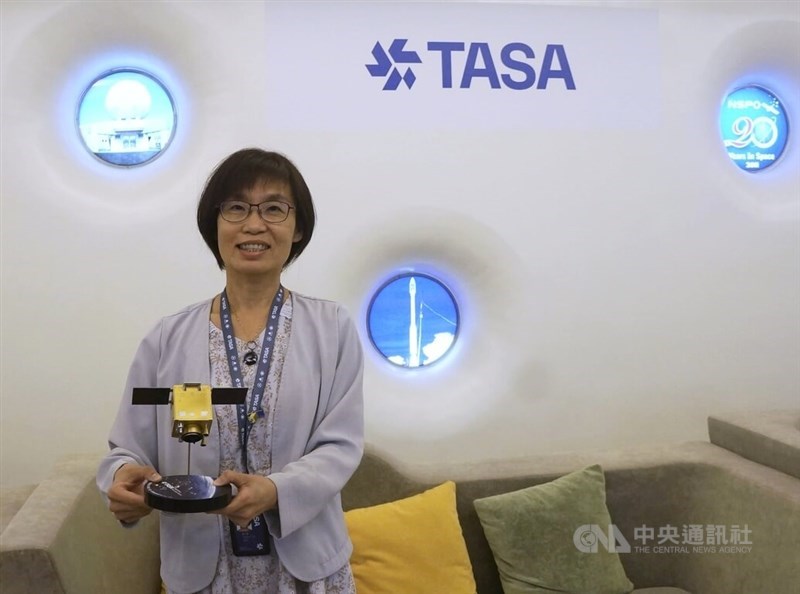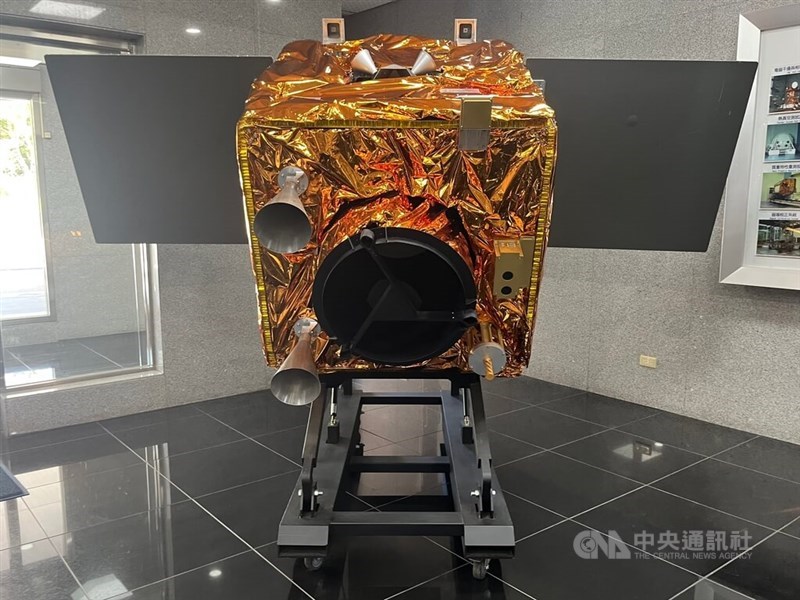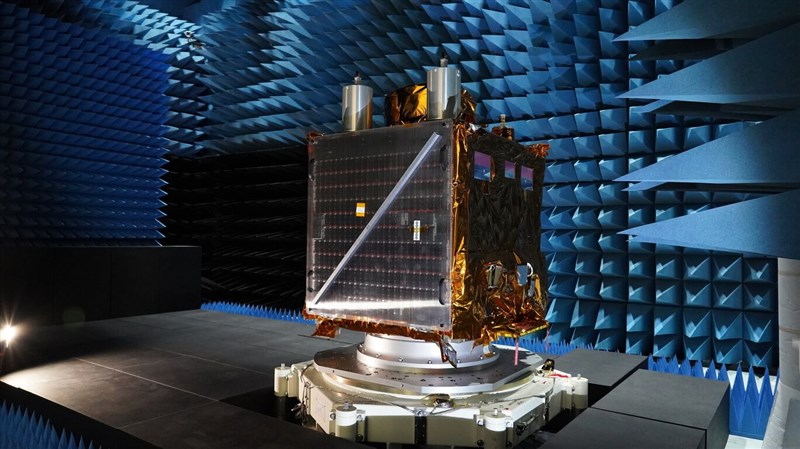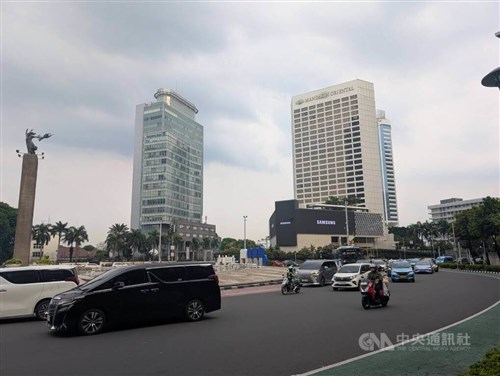INTERVIEW/Sharper eyes: Taiwan Formosat-8 to improve disaster relief, security

By Chao Min-ya and Sunny Lai, CNA staff reporters
Facing the need for more precise information to counter the frequent natural disasters and security risks it faces, Taiwan is turning to a new satellite constellation to deliver faster, clearer images to support key government functions.
The first satellite of the eight-satellite Formosat-8 project, developed by the Taiwan Space Agency (TASA), is scheduled to launch on Thursday Taiwan time, with full deployment of the constellation targeted for 2031.
Higher resolution

"It's quite a big jump, and not an easy one," project leader Cynthia Liu (劉小菁) told CNA in a recent interview, saying the first satellite, code-named FS-8A, will be able to capture ground details at a resolution of 1 meter and sharpen to 0.7 meters after processing.
That is a step up from the 2-meter imagery of Formosat-5, a single-satellite mission launched in 2017 that the TASA says has supported more than 150 disaster-relief operations in Taiwan and overseas.
Liu said subsequent satellites in Formosat-8 are being designed to reach 0.5-meter resolution (the last two of the eight satellites, according to the TASA) as the buildout progresses.
Such higher-resolution imagery, Liu said, can enable more accurate damage assessments after a natural disaster and help the government prepare better plans to respond to earthquakes and typhoons.
Comparing the new satellites with previous versions, Liu said Formosat-8 satellites can distinguish vehicle types such as trucks and cars on a highway, while the Formosat-5 model could only see traffic flows without fine detail.
Those improvements come at a cost about 25 percent higher than the amount spent on its predecessor.
According to TASA data, the Formosat-5 cost NT$5.7 billion (US$183.72 million) to build, while the 12-year project to develop the satellite constellation has a budget of NT$7.84 billion.
More frequent passes
The FS-8A is scheduled to lift off at 2:18 a.m. Taiwan time on Thursday on a SpaceX Falcon 9 rocket from Vandenberg Space Force Base in California, according to the TASA.
As Taiwan's first domestically developed optical remote sensing satellite constellation, Formosat-8 will be able to do more than just provide clearer images by operating in a sun-synchronous orbit 561 kilometers above Earth.
With more satellites, Formosat-8's revisit rate -- the frequency of imaging the same location on Earth -- will also improve, Liu said.
She noted that Formosat-5 typically passes over Taiwan about once every two days, while the fully deployed Formosat-8 constellation will be able to image Taiwan up to three times a day.
Once it is in orbit and all functions are normal, the FS-8A satellite itself will be able to pass over Taiwan once a day, according to the TASA.
Those upgrades in frequency matter because clouds often spoil optical images, Liu said, noting that an image is unusable if about 80 percent of it is cloud-covered.
In the case of the full Formosat-8 constellation, if clouds block a morning pass, an afternoon pass may find clear skies, she said.
"For users who need timely imagery, this is a major plus," Liu said.
National security

During an Oct. 7 ceremony held at TASA headquarters in Hsinchu City to mark FS-8A's shipment to California, TASA Director General Wu Jong-shinn (吳宗信) described Formosat-8's role in national security as being "of paramount importance."
With detailed analysis, satellite imagery can be turned into "a range of intelligence to safeguard the nation," Wu said at the time.
In the same vein, Liu said satellite imagery has strategic value, pointing to the ongoing Russo-Ukrainian war, where imagery has been used to monitor troop deployments and the status of nuclear facilities.
She said both Formosat-5 and Formosat-2 -- Taiwan's first remote sensing satellite launched in 2004 and decommissioned in 2016 -- have supported defense applications alongside the military, and Formosat-8 is expected to play a key role in national security as well.
Learning from past failures
In the six years since the initiation of the Formosat-8 project in 2019, the program has suffered several setbacks, including pandemic disruptions, year-long delays for critical parts, and even forced design changes, Liu recalled.

Yet Liu said her team never lost heart while assembling and testing FS-8A over the past two years, even when failures occurred.
"Everyone was resolute and worked through problems together," she said. "Formosat-5 revealed uncontrollable issues only after launch, so catching mistakes on the ground is a good thing."
She said Formosat-5's first images were blurry with bright spots, forcing the team to adopt solutions such as component tuning and post-processing to improve image quality.
The main culprit, Liu said, was the collimator, a precision instrument used for focusing and measuring optical performance.
"To avoid a repeat of Formosat-5's defocus, we put a lot of effort into Formosat-8," Liu said.
According to Liu, the new mission adopted a higher-specification collimator, with plans to conduct regular calibration every six months and additional checks after earthquakes.
The satellite's optical design also incorporates a thermal focusing mechanism that allows small post-launch focus errors to be corrected in orbit by adjusting the temperature to move the optics into precise focus, she said.
From self-reliance to market

At the Oct. 7 ceremony, President Lai Ching-te (賴清德) named the FS-8A the "Chi Po-lin Satellite" (齊柏林衛星) after the late documentary filmmaker known for capturing Taiwan through aerial imagery.
Lai also praised the FS-8A for having 84 percent of its critical components developed domestically, saying that the Taiwanese content of the country's satellites will continue to rise "as long as we keep pushing."
Echoing the president, Liu said the target for the last satellite in the constellation is 95 percent domestic content, a major step toward greater self-reliance in satellite development.
She also told CNA that distributors from Japan and other countries have approached the TASA about marketing imagery from Formosat-8 once it is in service.
"As long as the image quality is good enough, others will come to you," Liu said.
Enditem/ls
![Taiwan to open tourism office in Indonesia, boost Muslim-friendly travel]() Taiwan to open tourism office in Indonesia, boost Muslim-friendly travelTaiwan is stepping up efforts to attract Muslim travelers, particularly from Indonesia, with plans to open a tourism office in Jakarta next year as the country seeks to tap into one of the world's fastest-growing outbound travel markets.12/02/2025 10:20 PM
Taiwan to open tourism office in Indonesia, boost Muslim-friendly travelTaiwan is stepping up efforts to attract Muslim travelers, particularly from Indonesia, with plans to open a tourism office in Jakarta next year as the country seeks to tap into one of the world's fastest-growing outbound travel markets.12/02/2025 10:20 PM![Reshaping Taiwan's egg sector: Carrefour going all-in on cage-free eggs]() Reshaping Taiwan's egg sector: Carrefour going all-in on cage-free eggsOn Dec. 1, Carrefour Taiwan will become the first major retailer in the country to sell only cage-free eggs in all of its outlets in Taipei.11/30/2025 10:02 AM
Reshaping Taiwan's egg sector: Carrefour going all-in on cage-free eggsOn Dec. 1, Carrefour Taiwan will become the first major retailer in the country to sell only cage-free eggs in all of its outlets in Taipei.11/30/2025 10:02 AM![Taiwan needs to compete in whole value chain not only in chips: 'Chip War' author]() Taiwan needs to compete in whole value chain not only in chips: 'Chip War' authorTo maintain its competitiveness in the global semiconductor industry, Taiwan needs to compete in the entire value chain instead of only in chip manufacturing, Chris Miller, author of the international bestseller "Chip War," said on Thursday.11/22/2025 03:28 PM
Taiwan needs to compete in whole value chain not only in chips: 'Chip War' authorTo maintain its competitiveness in the global semiconductor industry, Taiwan needs to compete in the entire value chain instead of only in chip manufacturing, Chris Miller, author of the international bestseller "Chip War," said on Thursday.11/22/2025 03:28 PM
- Politics
Taipei to review ties with Seoul after 'wrongful' designation
12/10/2025 01:04 PM - Politics
Taiwan thanks 8 allies for their support at annual Interpol meeting
12/10/2025 12:42 PM - Society
Warm spell to continue before cold air arrives this weekend: CWA
12/10/2025 11:48 AM - Politics
Tech partnership, security top priorities of new UK envoy to Taiwan
12/10/2025 11:32 AM - Business
U.S. dollar lower in Taipei trading
12/10/2025 10:31 AM


